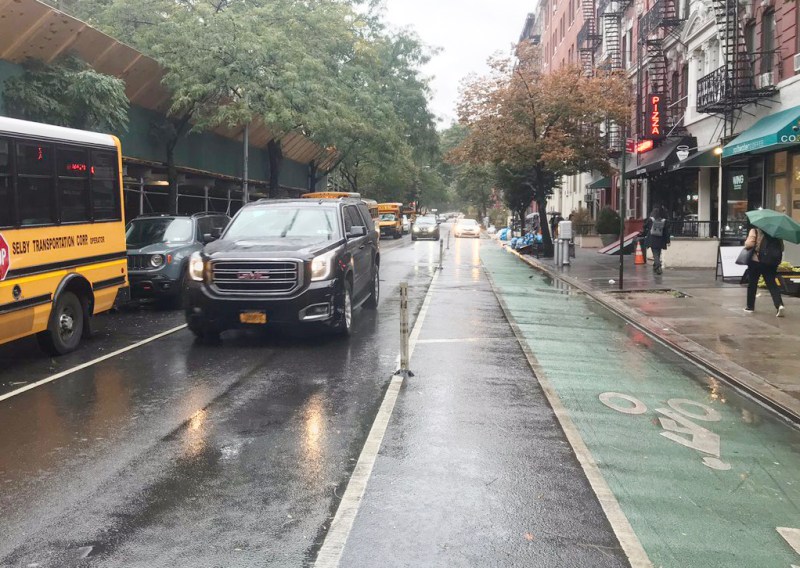Data: No Side Street Trafficopalyse Near 14th Street Busway

Call it “The Miracle On 12th Through 16th Streets.”
Residential streets surrounding 14th Street aren’t the congestion-jammed hellscapes the opponents of the city’s car-free Busway said they would be, according to an analysis by an outside firm. To the shock of even the firm studying the numbers, there’s been barely any change at all to the traffic levels on the side streets.
INRIX Research, an outside traffic firm, looked at what happened to traffic speeds on 12th, 13th, 15th and 16th Streets after cars were restricted from driving on 14th Street for the busway. Specifically, the firm studied traffic speeds on the streets between 7 and 10 a.m., and between 4 and 7 p.m.
The overall finding is that travel times have not suffered. The worst case scenario — on 16th Street — ended up increasing the journey between Ninth Avenue and Union Square West by just 23 seconds, thanks to a tiny decrease in traffic speed from 7.3 miles per hour to 6.9 miles per hour.
INRIX is considered an expert on traffic studies, and most recently made headlines by showing that traffic speeds have barely budged on the brand new, billion-dollar Kosciuszko Bridge (proving again that if you build it, they (drivers) will come). Even with its expertise, the firm was surprised by just how well the new traffic setup is working on 14th Street.
“It’s remarkable that initial analysis showed little change immediately following this massive road network change,” the firm wrote in a blog post about the before and after traffic speeds. “In most instances, a radical change [in] road configuration causes havoc until a new ‘normal’ is established, but in this case it did not.”
Busway opponents sued on the grounds that forbidding cars from 14th Street between Third to Ninth avenues for most of the day would result in a traffic apocalypse that could be seen from space.
“[It] would not only cause horrific traffic jams on 12th Street, 13th Street, 15th Street, 16th Street, 17th Street, 18th Street (a street with an MTA bus depot at the corner of Sixth Avenue), 19th Street, and 20th Street [and] would also cause traffic on north-south avenues including Eighth, Seventh, Sixth, Fifth, Fourth, and Third Avenue, and Broadway, and Park Avenue,” bus lane antagonist Arthur Schwartz wrote in his suit to stop the Busway. “The traffic will bring with it air pollution and noise pollution.”
But the hard data from INRIX confirms that instead of “horrific traffic jams,” traffic has melted away like one’s early evening hope of overnight companionship as the clock ticks towards last call and neighboring barstools are unoccupied.
The Busway proponents at Transportation Alternatives took the opportunity to call the success a template for future bus-only streets in neighborhoods across the city.
“What we’ve achieved on 14th Street is a huge victory for bus riders, but that’s not all,” spokesman Joe Cutrufo said. “It’s also a victory for smart transportation planning — giving buses and freight priority on one street doesn’t result in car-choked parallel routes — and a victory for New Yorkers who want to see similar bus-priority streets in their neighborhoods.”
Department of Transportation Commissioner Polly Trottenberg also saw the potential of more busways.
“The results have been even more exciting than we thought … not just that the buses are moving faster, but the street feels calmer,” she said at last week’s Vision Zero Cities conference. “And that the traffic on the side street hasn’t turned into the apocalyptic hellscape that critics predicted.”
Trottenberg’s comments echoed many media analysts, including journalist Aaron W. Gordon, who called the busway the “Miracle on 14th Street” in one of his few “good news” posts.
Update: An earlier version of this story suggested that the city hired INRIX to do these studies. In fact, the firm released the data independently.





